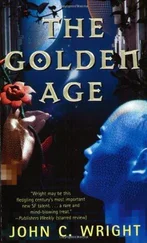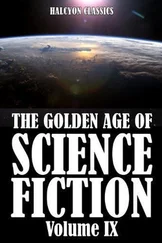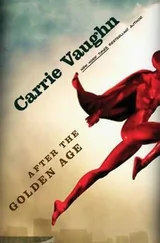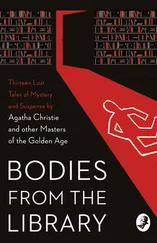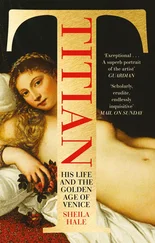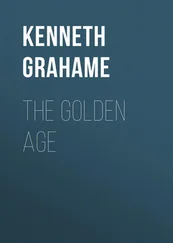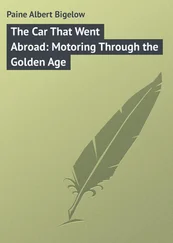Michal Ajvaz - The Golden Age
Здесь есть возможность читать онлайн «Michal Ajvaz - The Golden Age» весь текст электронной книги совершенно бесплатно (целиком полную версию без сокращений). В некоторых случаях можно слушать аудио, скачать через торрент в формате fb2 и присутствует краткое содержание. Год выпуска: 2010, Издательство: Dalkey Archive Press, Жанр: Современная проза, на английском языке. Описание произведения, (предисловие) а так же отзывы посетителей доступны на портале библиотеки ЛибКат.
- Название:The Golden Age
- Автор:
- Издательство:Dalkey Archive Press
- Жанр:
- Год:2010
- ISBN:нет данных
- Рейтинг книги:4 / 5. Голосов: 1
-
Избранное:Добавить в избранное
- Отзывы:
-
Ваша оценка:
- 80
- 1
- 2
- 3
- 4
- 5
The Golden Age: краткое содержание, описание и аннотация
Предлагаем к чтению аннотацию, описание, краткое содержание или предисловие (зависит от того, что написал сам автор книги «The Golden Age»). Если вы не нашли необходимую информацию о книге — напишите в комментариях, мы постараемся отыскать её.
is Michal Ajvaz’s greatest and most ambitious work.
The Golden Age
The Golden Age — читать онлайн бесплатно полную книгу (весь текст) целиком
Ниже представлен текст книги, разбитый по страницам. Система сохранения места последней прочитанной страницы, позволяет с удобством читать онлайн бесплатно книгу «The Golden Age», без необходимости каждый раз заново искать на чём Вы остановились. Поставьте закладку, и сможете в любой момент перейти на страницу, на которой закончили чтение.
Интервал:
Закладка:
These quiet afternoons taught me that the chaotic heterogeneity in the letters was not brought about by habit and inertia; indeed, there was a restlessness in the script that caused its constant transformation. It was as if it were running away from itself while trying to catch up with itself; it seemed to me that it dreamed of a long-lost past or a magnificent future, of a script ages old or else an idealized one yet to come, full of perfect, resplendent letters, seeking these in endless transformation, following a great variety of mysterious clues, setting out in many different directions at once, but in the end always failing in its efforts.
Even after this it was a long time before I was in a position to appreciate the true nature of the island’s script. Having abandoned the hypothesis that symbols from a variety of systems had been stitched together and the whole then maintained by inertia, there was a time — after I succeeded in uncovering the pictograms from which most of the island’s letters were derived — I supposed I had indeed discovered the script’s origin; how great my surprise, then, when, delving deeper in the drifts of sand in the royal palace, I discovered some documents written in a script older still! I learned that what I had assumed to be an early pictographic script had itself originated in the interpretation of puzzling symbols which represented absolutely nothing.
It seemed that changes washed over the script in waves, and that these waves had no single direction. Apparently the pictographic script had changed many times to form more abstract symbols — by the simplification of the figures into outlines in which it was no longer possible to read the model, or else by the in-growth of tangles of lines — and many times, too, the abstract symbols turned back into pictures, once their outlines began to live and grow, the tangles of lines yielding the figures of humans and demons, animals, birds, and monsters, which till then had been present only in the shapes of the letters as distant dreams or reflected reflections — as memory and suggestion. It seemed to me that the present-day letters of the island were on the cusp of just such a transformation into a pictographic script: a few of the characters had already taken on the form of a bird or an animal. Though the majority had yet to begin forming pictures, I saw shapes trembling in the letters, preparing to break through: nascent, hitherto veiled faces of strange creatures whose cunning eyes blinked or beaks obtruded impatiently from their tangles of lines; unsettling, to say the least. I soon realized that all the letters were exuding the same sort of anxiety — as if they contained a secret message, unknown but foreshadowed; every text is a palimpsest, every letter a secret cipher.
The transformation of pictures into abstract symbols and abstract symbols into pictures wasn’t the only way in which the script developed, however; evidently there were times, for example, when their lines frayed into ever-thinner threads, or when the lines ran into one another, forming square, solid shapes, or when the lines stretched out like the stalks of climbing plants and had to bend their tips into spirals or arch into sine curves so that they could fit into the spaces between the lines. Then there were times when the letters, pictorial and abstract both, crumbled into ever-smaller pieces until they became cloudlets of ink dust; the documents of these eras look like pictures of a white sky studded with black constellations. There were times too when the letters, pictorial and abstract both, became so complicated that it would take several hours to write just one of them; so, of course, very little was written, although it doesn’t seem that anyone on the island was too concerned by this. Indeed, I believe the writer was actually pleased if, on his way across the line, he struck upon such a letter; he could then take a break from his narrative and immerse himself joyfully in the writing of a single character.
Nor was it possible to read this kind of laboriously written script in a single, fleeting glance; it was necessary to go through it collecting distinguishing features — and there were a great many of these, hidden in its knotty network of lines. (It might be that two letters had twenty-nine distinguishing features in common, differing only in the thirtieth.) Hence, a reader could wade around in the bliss of a single letter, and the reading of a single letter of this labyrinthine script might take him one whole afternoon. It rarely happened, in the process, that the reader attained the meaning of the word of which this letter was a part, but he was certainly not concerned by this: his compensation was his encounter with the meaning of a single letter — which always far surpasses the reference point of speech, and its mysterious capacity for communication.
Having decided to write this book, I considered how it should look. For a time I wondered whether it might not be best to produce a book which, instead of a narrative about the island, was made up of nothing more than a few of these complicated letters, thus allowing readers to read into it what they would. To the objection that my readers wouldn’t know the sounds to which the letters refer, the islanders’ riposte would surely be, “All the better!”
Of course, the island’s script developed through its interaction with other scripts as well. Thanks to its precious stones, the island always had contact with the outside world. Sometimes I even think I see traces of the island’s viewpoint and manner of thinking in European culture — in Novalis’s meditations on shapes that generate sounds in wood shavings, for example, or in the origins of abstract painting, or in the letter-pictures of Klee. It’s far more difficult, on the other hand, to find manifestations of the spirit of Europe on the island. Although the islanders have always been very accepting of everything, in the end things always turn out the same way, as they did with the language, science, and religion of their erstwhile conquerors from Europe: all of these borrowings were perfectly absorbed into the rhythms of the island and thus transformed into everyday parts of island life, indistinguishable from any other. Nevertheless, it is still possible to find deposits in the island’s script that indicate several old encounters with the Latin alphabet, each of which led to the siphoning off of some of its letters. Marooned among the native letters, these orphaned Latin characters experienced a bizarre metamorphosis: they expanded, they hurled out offshoots in all directions, slowly revealing images of tigers, birds, and fantastical trees. (Was this not, in fact, a return to their mystical origins? A partial revelation of their enduring, hidden power?) Whenever the script of the island swallowed up foreign letters in this way, it would transform them so perfectly in the course of its digestion — into the aforementioned animals, or tangles of lines, or geometric shapes — that on second encounter they were unrecognizable. And it would accept the same letter again and again, and so seem to have grown a new symbol with a distant similarity to the existing one, when in fact what had happened is that the same alien character had been swallowed up by itself, by its own rampant form, which it had initially acquired after first being disfigured by the island’s contagion…
But, none of these transformations could explain the island’s script’s most striking feature: the strange lack of unity among the characters. This disunity arose as a consequence of the fact that the restless tangle of forces urging the letters to undergo their continuous metamorphoses was not distributed equally across all letters; for example, the force that impelled the transformation of letters into thin, frayed, and randomly twisted threads might strike violently in one place — within a single letter or a group of letters — and would pick at and crumple its target quite furiously, without noticing the fact that at the same moment, in another part of the text, a force was at play which was beating the letters into solid pegs, while, simultaneously, in yet another section, the letters had become translucent and were transforming into dull smears (but this force had already almost burned itself out), and then, finally, in yet another place, a force thus far unidentified seemed to be staking a claim for symmetrical ornamentation. At any given moment a letter was tugged at by a variety of forces at various stages of development; some of these were tentative, hesitant, just starting out, some were now at the height of their strength, while others were almost entirely spent. And where these forces abutted each other, they collided, made alliances, applied indirect influence, held themselves back, and gathered their strength.
Читать дальшеИнтервал:
Закладка:
Похожие книги на «The Golden Age»
Представляем Вашему вниманию похожие книги на «The Golden Age» списком для выбора. Мы отобрали схожую по названию и смыслу литературу в надежде предоставить читателям больше вариантов отыскать новые, интересные, ещё непрочитанные произведения.
Обсуждение, отзывы о книге «The Golden Age» и просто собственные мнения читателей. Оставьте ваши комментарии, напишите, что Вы думаете о произведении, его смысле или главных героях. Укажите что конкретно понравилось, а что нет, и почему Вы так считаете.

